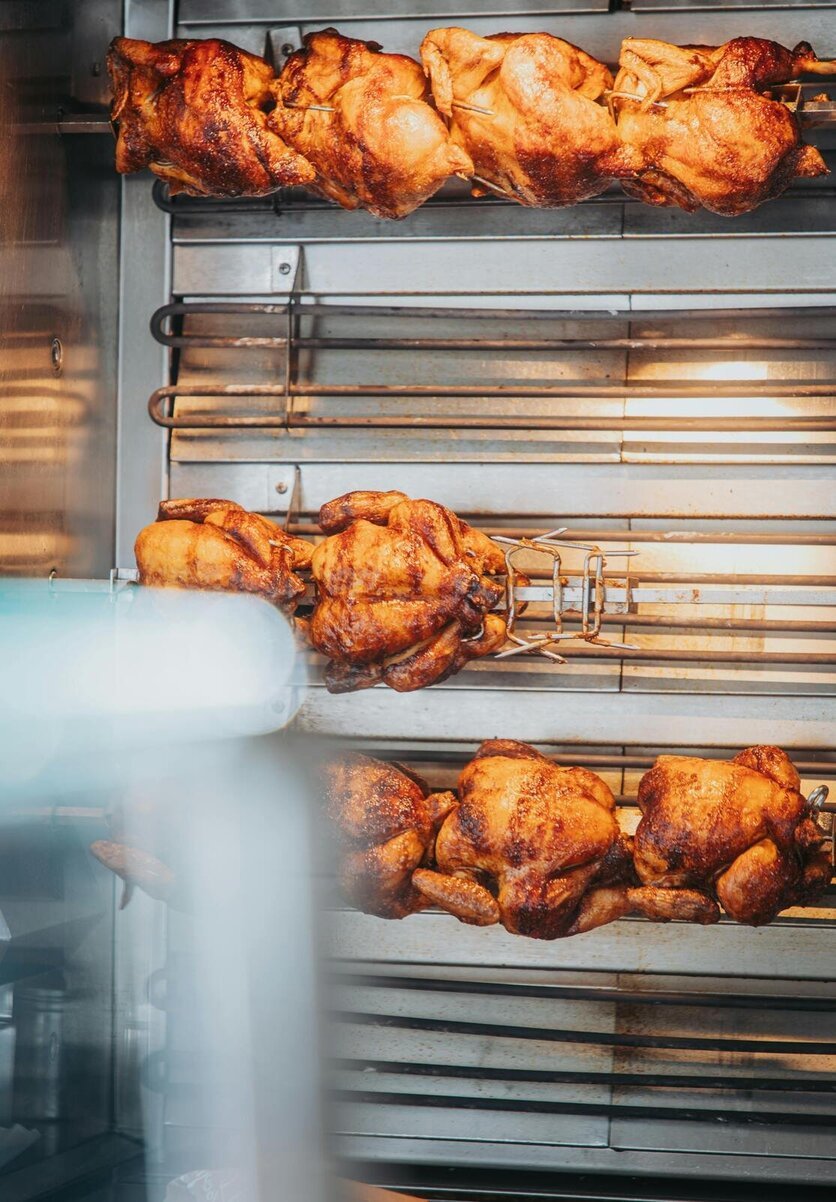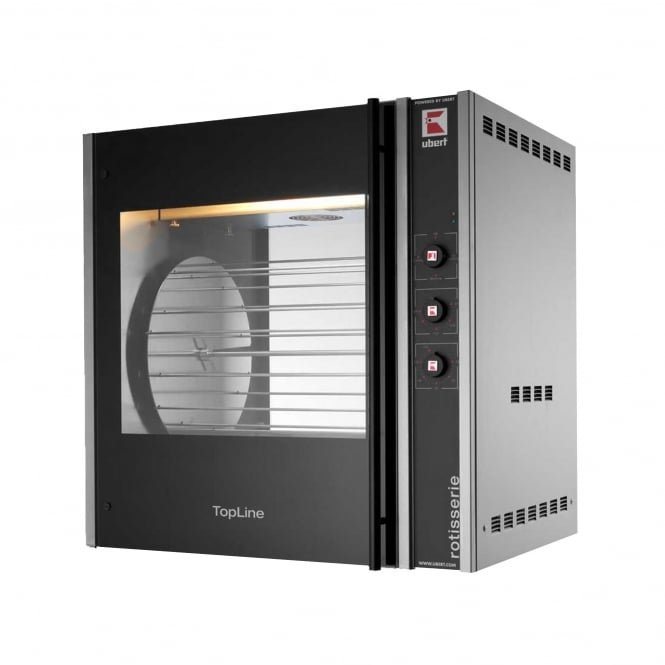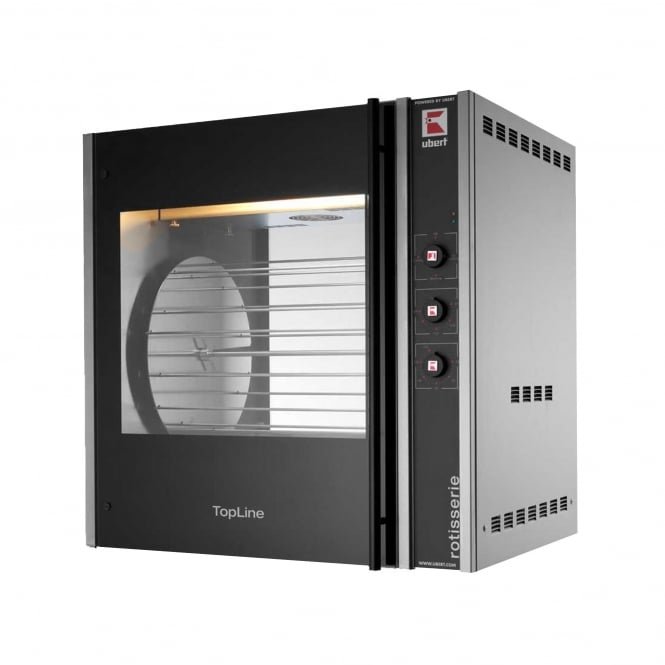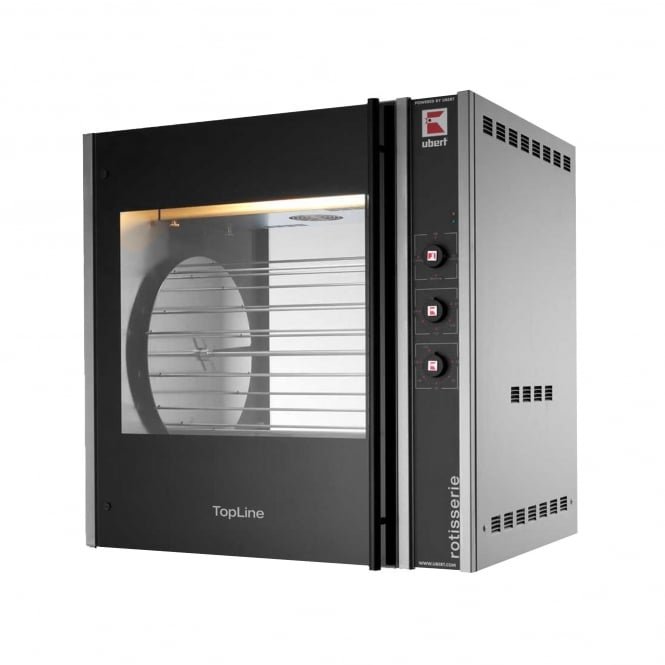Ultimate Guide to Rotisserie Chicken Ovens (2025)
Introduction
Looking to level up your cooking game and wow your customers with mouthwatering, evenly cooked meats? A rotisserie oven might be the secret weapon your restaurant, catering business, or butcher shop needs.
In this ultimate guide, we’ll explore everything you need to know about rotisserie ovens—from how they work to why they’re a game-changer for preparing succulent rotisserie chicken and other meats. Whether you’re considering adding a rotisserie oven to your kitchen lineup or upgrading your current setup, this guide will walk you through the benefits of rotisserie cooking and how to choose the right commercial rotisserie oven for your business.
By the end, you’ll understand why a high-quality oven with built-in rotisserie, like the models offered by GM Service Engineering, could be the best investment you make this year.
Why Choose a Rotisserie Oven? Key Benefits for Restaurants, Butchers & Caterers
Investing in a rotisserie oven isn’t just about cooking—it’s about delivering a flavour-packed experience that keeps customers coming back. Here’s why these ovens stand out compared to traditional cooking methods:
1. Unmatched Flavour and Moisture Retention
The rotisserie method involves slow roasting meat - especially popular for rotisserie chicken- while it rotates, allowing juices to baste the meat continuously. The result? Crispy, golden skin on the outside and juicy, tender meat on the inside. This technique is especially effective for chicken rotisserie ovens, making every bite a customer-pleaser.
A study by the National Chicken Council revealed that rotisserie chicken is one of the most popular prepared food items in supermarkets, thanks to its consistent flavour and tenderness. Imagine bringing that same appeal to your menu!
2. Visual Appeal That Sells
Let’s be honest—seeing rows of golden-brown chickens turning in a commercial rotisserie oven is a showstopper. The visual aspect can drive impulse purchases and increase foot traffic, especially for butchers and caterers operating at markets or festivals. It’s cooking and marketing all in one.
3. Efficiency and Consistency
Unlike standard ovens, ovens with built-in rotisserie mechanisms ensure even cooking from all angles. This reduces the risk of overcooked edges and undercooked centres, particularly in large-scale cooking environments. Plus, many commercial models (including Ubert rotisserie ovens available through GM Service Engineering) offer programmable settings, allowing for repeatable, consistent results with minimal manual oversight.
4. Versatility Beyond Chicken
While chicken rotisserie ovens steal the spotlight, these machines aren’t one-trick ponies. You can cook pork shoulders, ribs, lamb legs, and even fish—broadening your menu and impressing your customers with variety.
According to FESMAG’s rotisserie equipment guide, versatility is a key factor for commercial kitchens when choosing cooking equipment.
5. Energy and Time Savings
Many commercial rotisserie ovens are designed to optimise energy usage while reducing cooking times compared to traditional roasting methods. This means faster turnaround, lower utility bills, and higher profit margins.
A high-quality rotisserie oven can elevate your menu while improving kitchen efficiency.
How to Choose the Right Rotisserie Oven for Your Business
Choosing a commercial rotisserie oven isn’t just about picking the shiniest model—it’s about finding the right fit for your specific needs. Here are key factors to consider when selecting the perfect oven for your restaurant, butcher shop, or catering business.
1. Capacity: Matching Output to Demand
Consider how much meat you’ll be cooking at once. For a busy restaurant or catering operation, a larger-capacity commercial rotisserie oven can handle multiple rotisserie chickens, ribs, or other meats simultaneously, ensuring you keep up with customer demand.
For example, Ubert rotisserie ovens, available through GM Service Engineering, offer a range of sizes—from compact units ideal for smaller spaces to high-capacity models designed for large-scale operations. This flexibility ensures there’s a model that aligns perfectly with your output requirements.
2. Footprint and Space Requirements
Don’t overlook the space you have available. Some ovens are designed with a vertical build to save on floor space (great for butchers or smaller kitchens), while others may require a larger footprint but offer higher capacity.
3. Energy Efficiency and Operating Costs
Look for models that optimise energy use without compromising on performance. Many ovens with built-in rotisserie functions offer eco-friendly features like programmable timers and automatic shut-offs. This reduces both cooking times and energy bills.
Ubert ovens are known for their efficient design, helping businesses maintain lower operating costs while still delivering high-quality results.
4. Ease of Cleaning and Maintenance
Commercial kitchens run on tight schedules, so equipment that’s easy to clean and maintain is a must. Features like removable drip trays, self-cleaning functions, and accessible components can save you hours of cleanup time.
5. Cooking Technology and Features
Not all rotisserie ovens are created equal. Look for features like programmable cooking cycles, infrared burners, or multi-speed rotisserie motors that allow you to tailor the cooking process to different meats and recipes.
Ubert’s advanced technology includes precise temperature controls and multi-zone cooking, giving chefs and butchers flexibility while ensuring consistency, whether you’re roasting chicken, lamb, or even fish.
6. After-Sales Support and Warranty
Investing in a commercial oven is a big decision, so make sure you have access to reliable after-sales support. GM Service Engineering not only supplies Ubert rotisserie ovens but also offers expert servicing and maintenance support, ensuring your equipment stays in top shape for years.
Common Mistakes to Avoid When Using a Rotisserie Oven
Even with the best rotisserie oven, certain missteps can affect the quality of your cooked meats or the longevity of your equipment. Here are some common mistakes—and how to sidestep them:
1. Overloading the Oven
Trying to squeeze in too many chickens (or other meats) at once can lead to uneven cooking and poor air circulation. Always follow the manufacturer's recommended capacity to ensure even heat distribution and consistent results.
With Ubert rotisserie ovens, capacity guidelines are clearly set out, helping you maintain top-quality output without the guesswork.
2. Neglecting Regular Cleaning
Skipping routine cleaning leads to a build-up of grease and residue, which not only affects flavour but can also pose safety risks. Make use of features like removable drip trays and self-cleaning functions if your oven offers them.
A dirty oven can also strain the rotisserie motor or burners, reducing efficiency over time.
3. Improper Trussing of Meats
Failing to properly secure your chickens or other meats on the spit can lead to uneven rotation or worse—items falling off mid-cook. Always ensure meat is securely fastened and balanced before starting the rotisserie cycle.
4. Ignoring Preheating
Just like with traditional ovens, failing to preheat your rotisserie oven can result in uneven cooking. Give the oven enough time to reach the desired temperature before loading the meats.
5. Using the Wrong Cut or Size of Meat
Not all cuts of meat are ideal for rotisserie cooking. For example, chickens should be of a similar weight and size to ensure they cook uniformly. Mixing different weights on the same spit can cause some items to be overcooked while others remain underdone.
Conclusion: Elevate Your Cooking Game with the Right Rotisserie Oven
A rotisserie oven isn’t just another piece of kitchen equipment—it’s an investment in flavour, efficiency, and customer satisfaction. Whether you’re a restaurant owner looking to serve the perfect rotisserie chicken, a caterer aiming to impress at large events, or a butcher seeking to expand your offerings, the right commercial rotisserie oven can make all the difference.
From retaining moisture and enhancing taste to providing an eye-catching display that draws in customers, the benefits of rotisserie cooking are hard to beat. And when it comes to selecting reliable, high-performance equipment, Ubert rotisserie ovens, available through GM Service Engineering, offer the ideal balance of quality, efficiency, and versatility.
Ready to explore how a rotisserie oven could transform your menu and boost your business?
Learn more about our range of ovens and expert servicing support.
Frequently Asked Questions
-
A rotisserie oven cooks meat by slowly rotating it on a spit inside the oven. This constant rotation ensures even cooking, allowing the meat to baste itself in its own juices, which results in tender, flavourful dishes with crisp, golden exteriors.
-
While chicken rotisserie ovens are most popular, you can cook a wide variety of meats including pork, beef ribs, lamb, turkey, and even fish. Some commercial rotisserie ovens are also designed to handle vegetables or speciality dishes. No matter the dish, a well-designed rotisserie oven ensures even cooking and consistent results.
-
There are several types of rotisseries:
Horizontal rotisseries: The meat rotates horizontally, which is common for larger cuts like whole chickens or lamb legs.
Vertical rotisseries: These are often used for dishes like shawarma or gyros, where the meat is stacked vertically and cooked as it rotates.
Ovens with built-in rotisserie: Many commercial ovens now include built-in rotisserie features, combining the best of both worlds for versatile cooking.
-
The key advantages include:
Even cooking and self-basting for juicier meat.
Enhanced flavour and crispy exteriors.
Energy-efficient cooking in commercial ovens.
Visual appeal that attracts customers.
Versatility to cook a range of meats and dishes.
-
Yes! A commercial rotisserie oven with adequate capacity can handle turkeys. Ensure the bird fits comfortably and is securely trussed for even cooking.
-
Typically, it takes 60 to 90 minutes to cook a standard-sized chicken (about 1.5kg) in a chicken rotisserie oven at around 180°C. However, timing may vary depending on the oven and the size of the bird. Always check the internal temperature reaches 75°C for safe consumption.
-
While roasting involves cooking meat in a static position in an oven, rotisserie cooking rotates the meat, allowing it to cook evenly and self-baste. This rotation prevents the meat from drying out and enhances the texture and flavour.
-
The rotating motion allows juices to continuously baste the chicken, locking in moisture and creating a unique balance of crisp skin and tender meat. This process, combined with even heat exposure, gives rotisserie chicken its distinct, mouth-watering flavour.





